IBWC VI
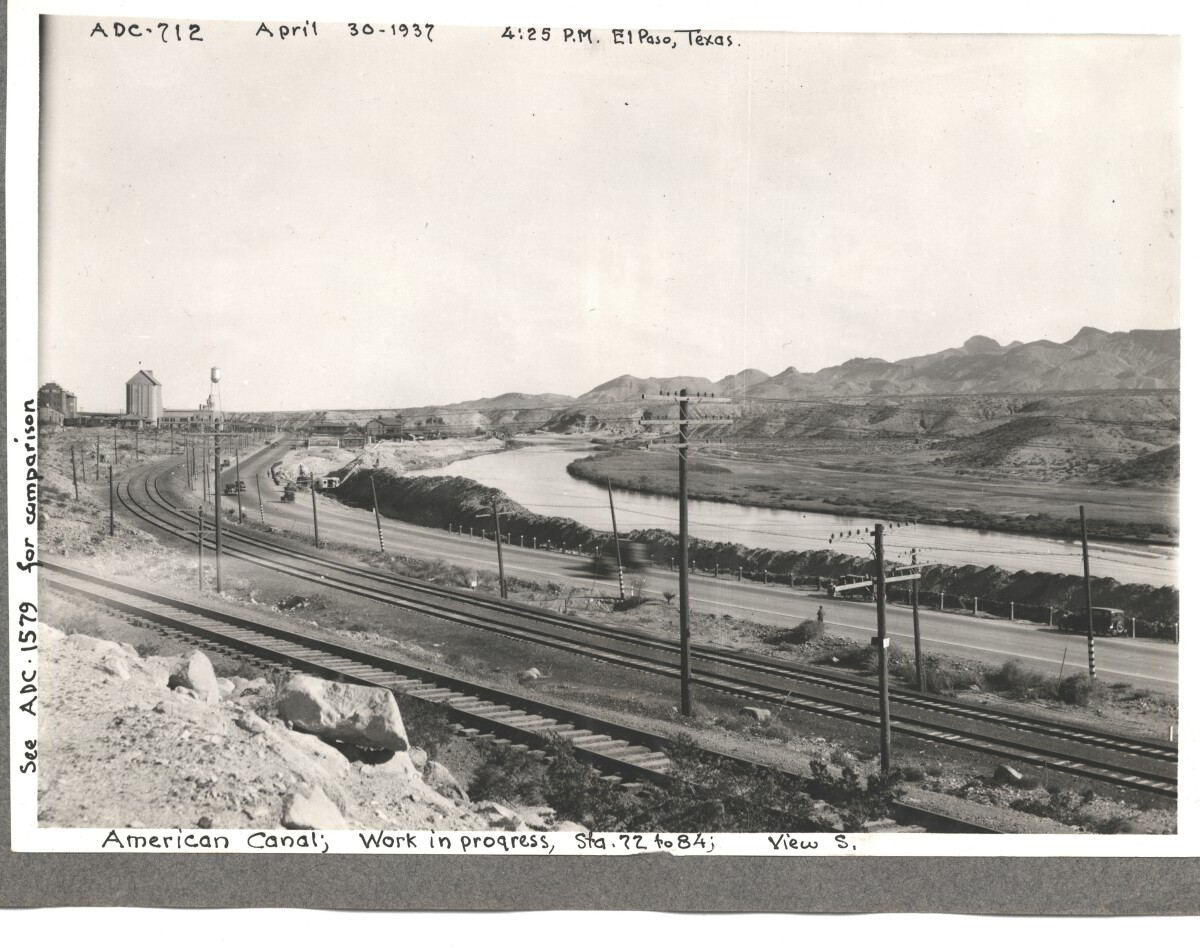
IBWC VI
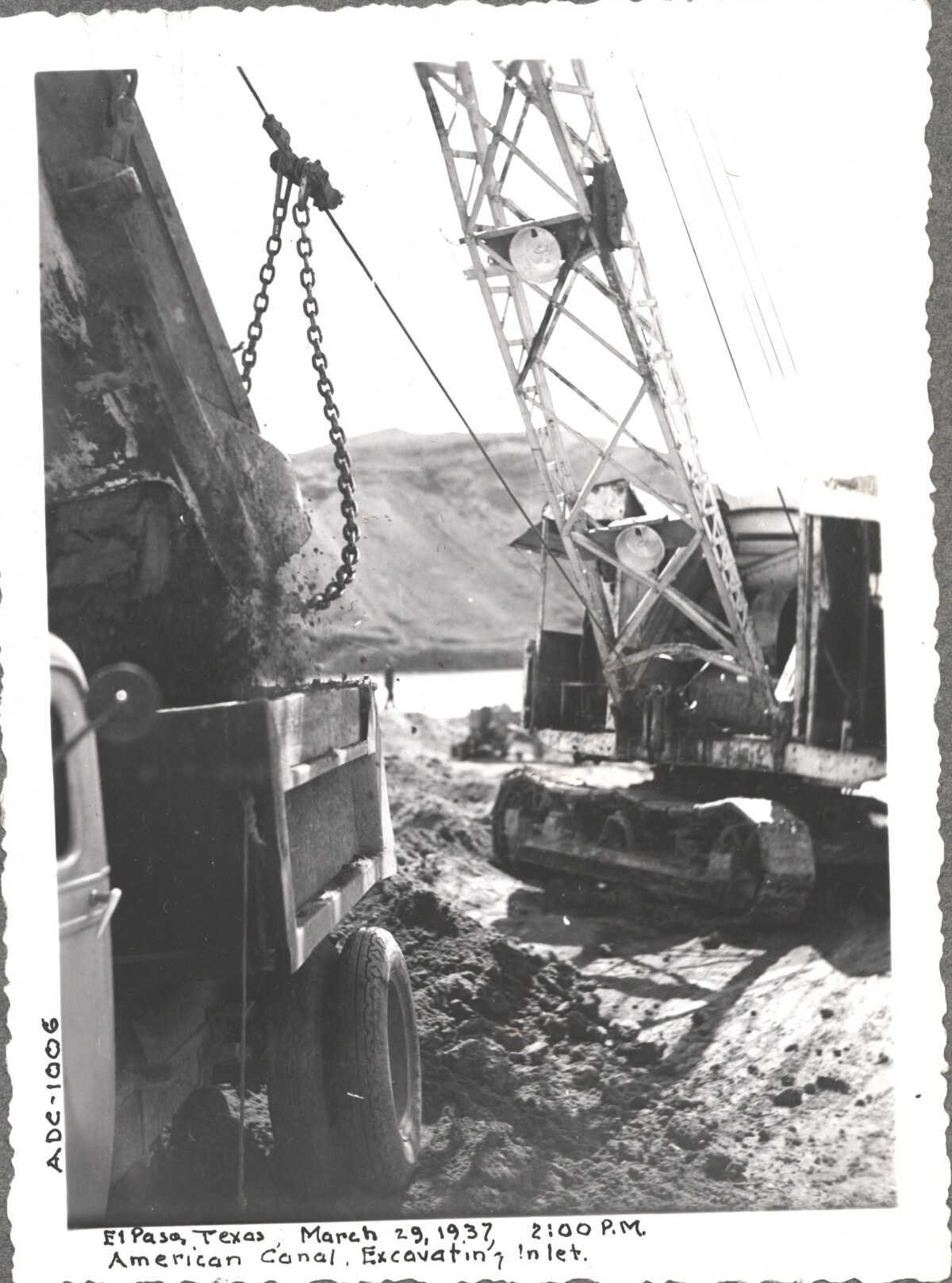
IBWC VI
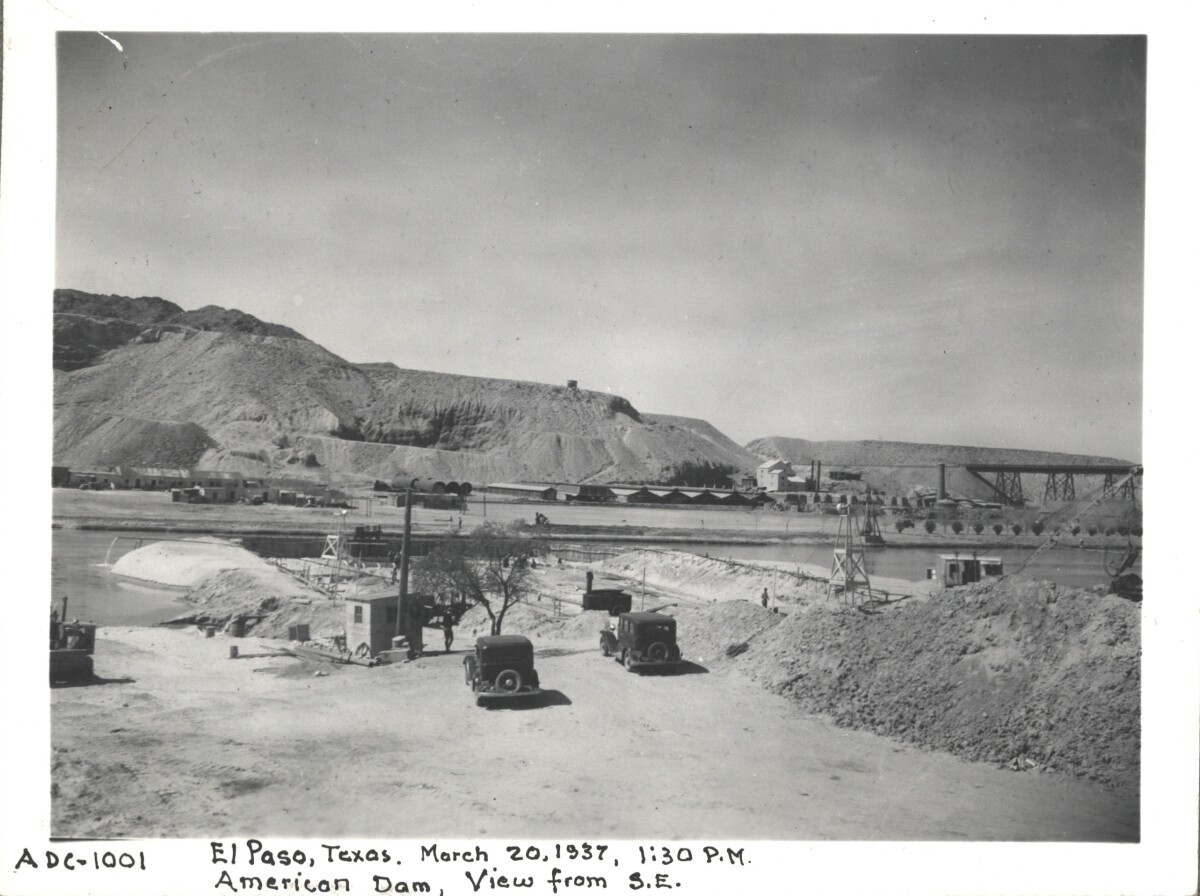
IBWC VI
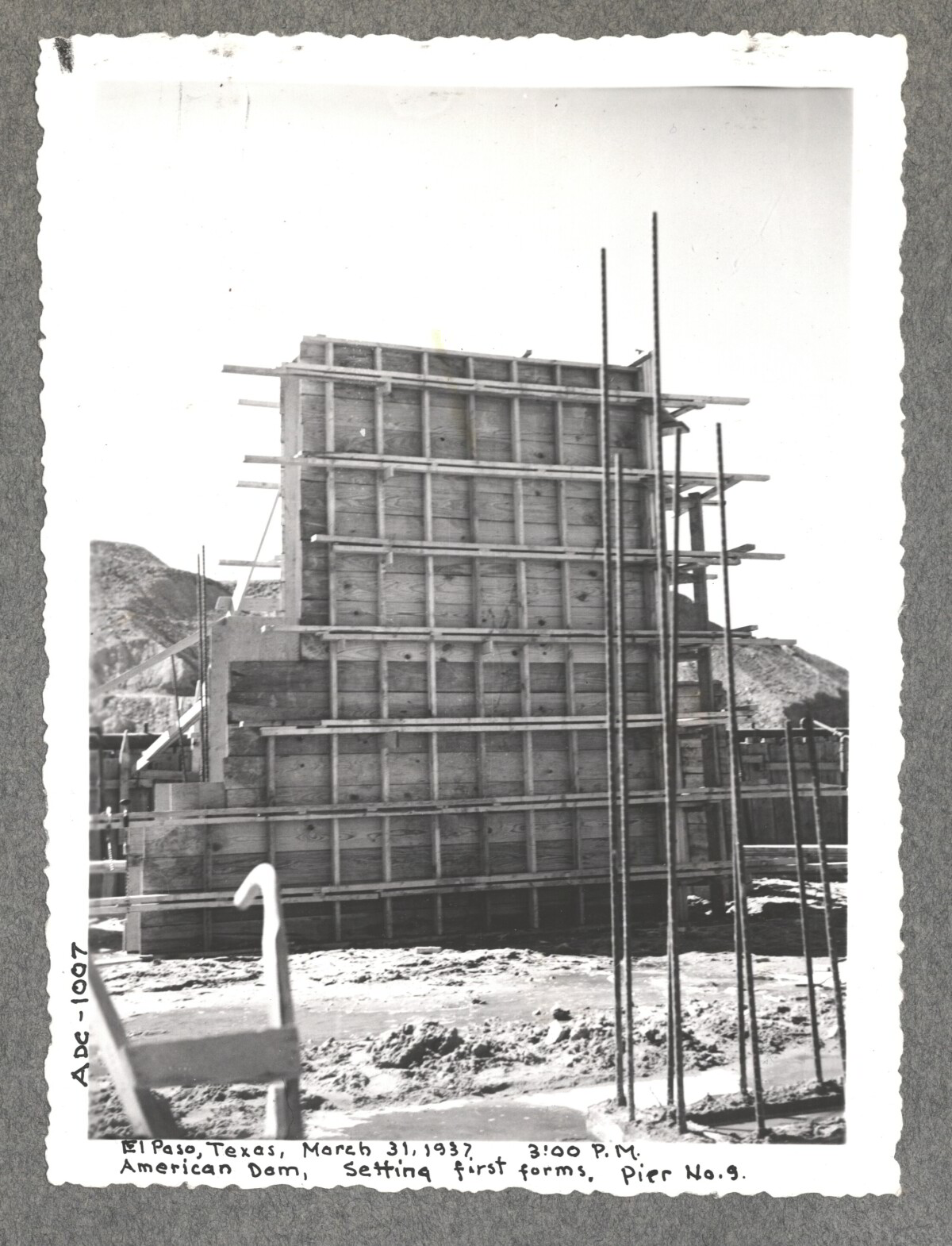
IBWC VI
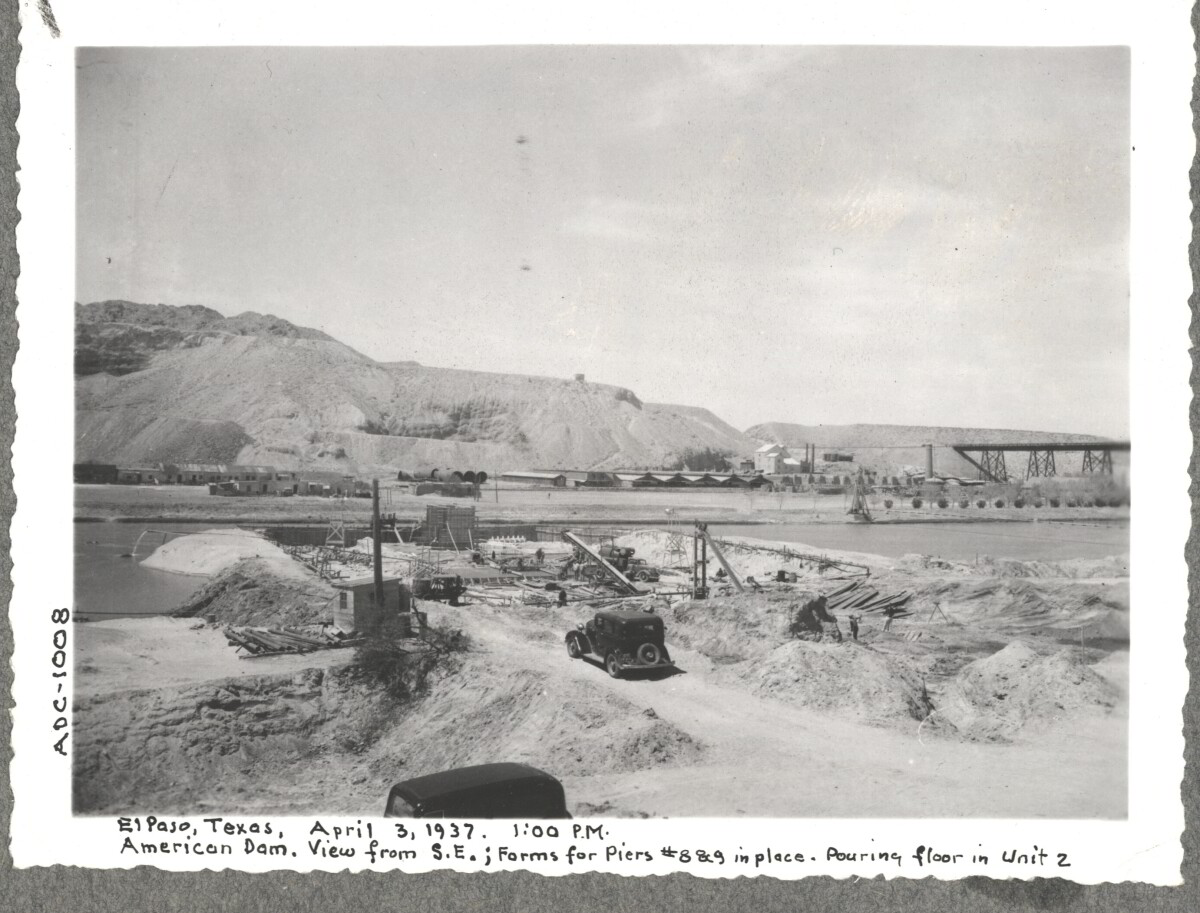
IBWC VI
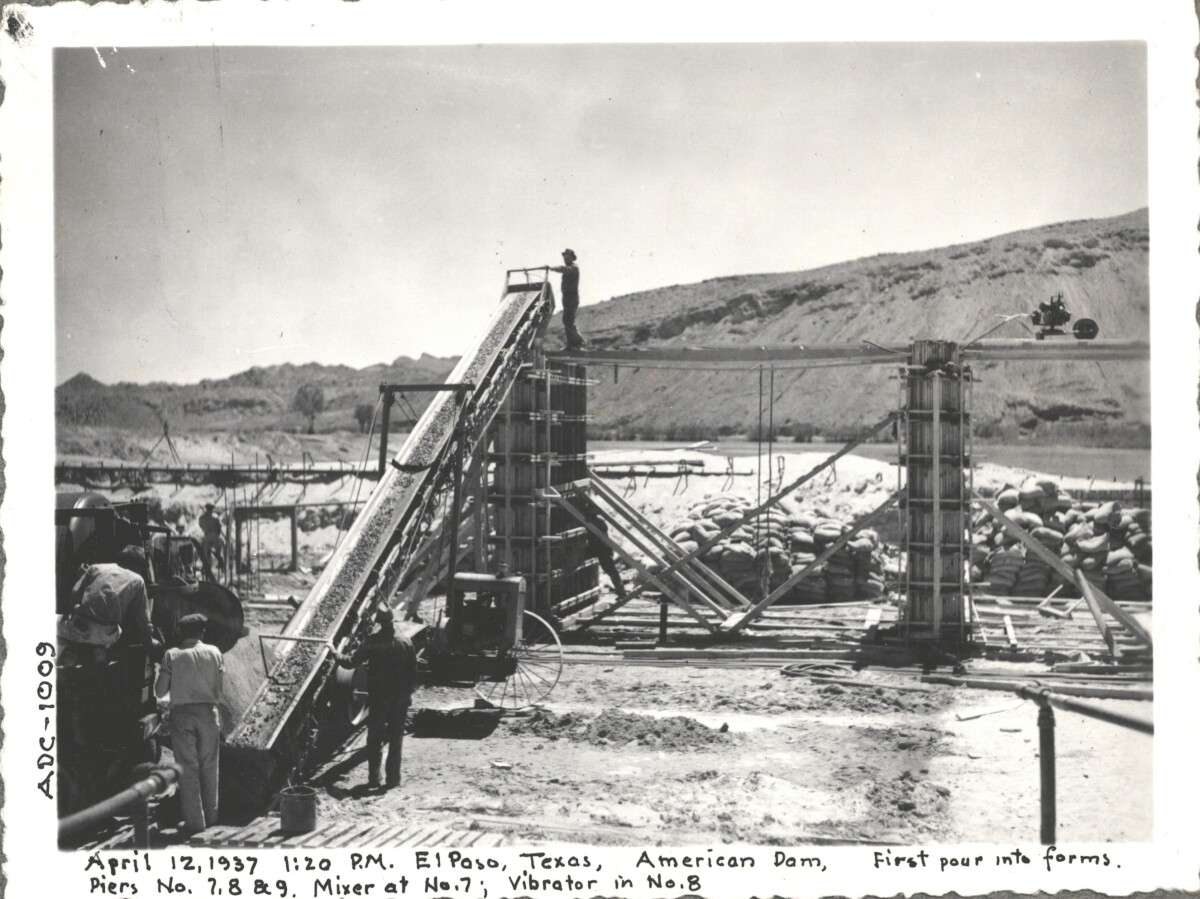
IBWC VI
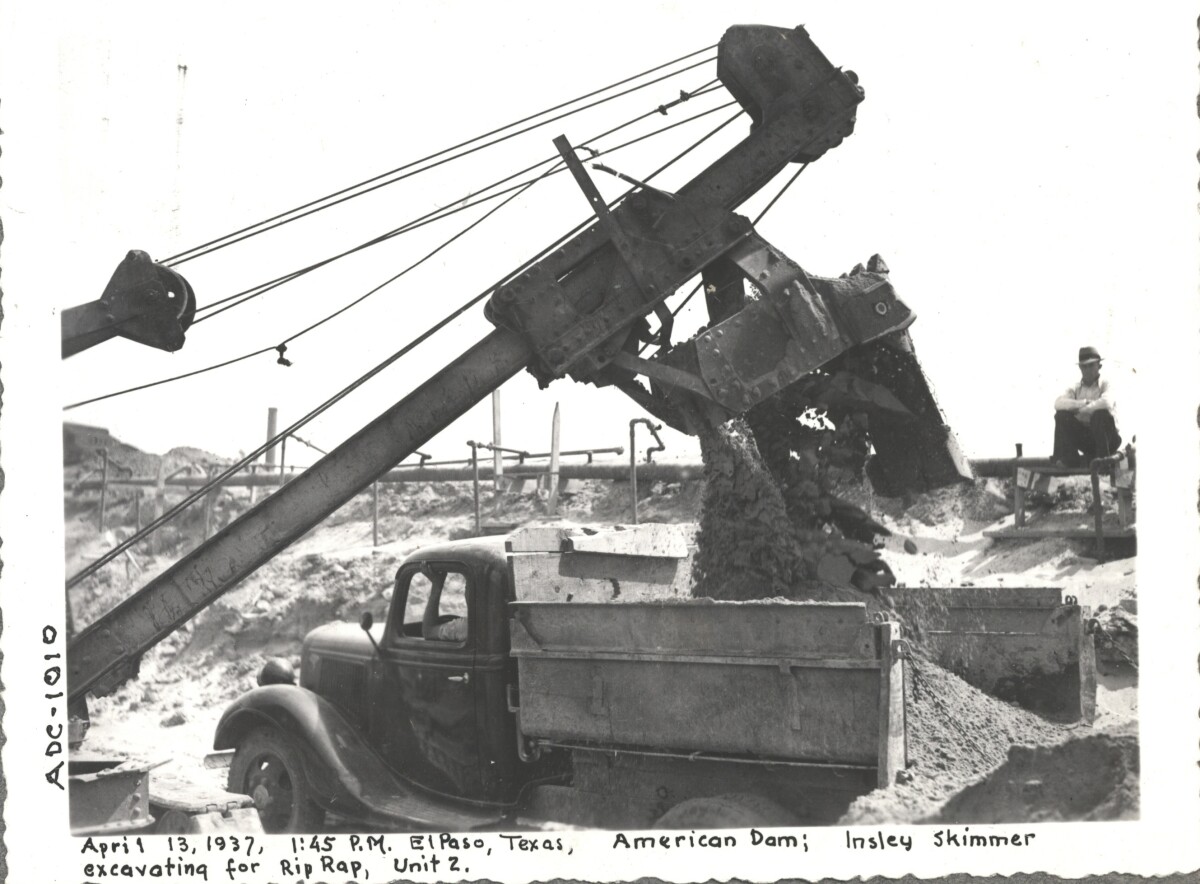
IBWC VI
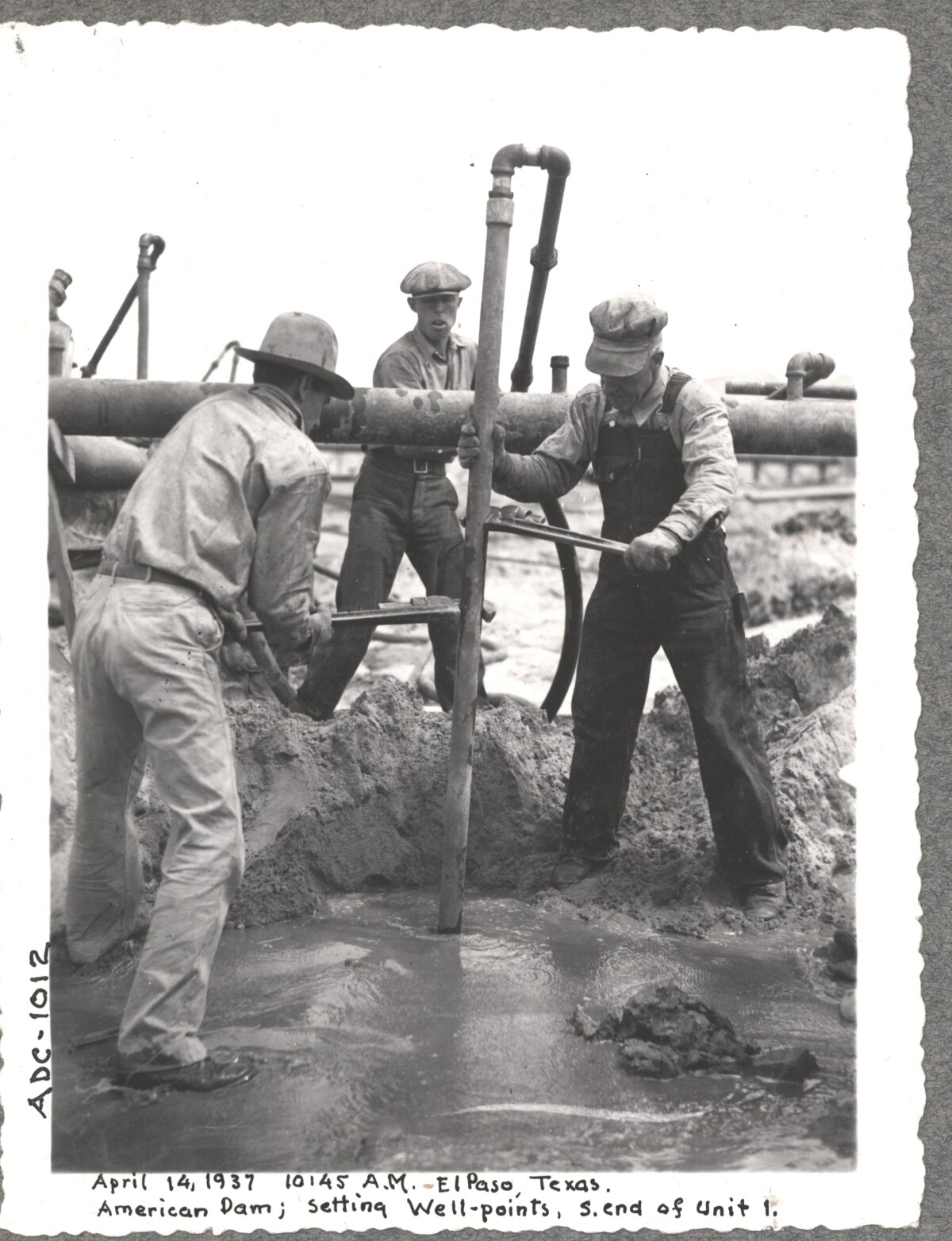
IBWC VI
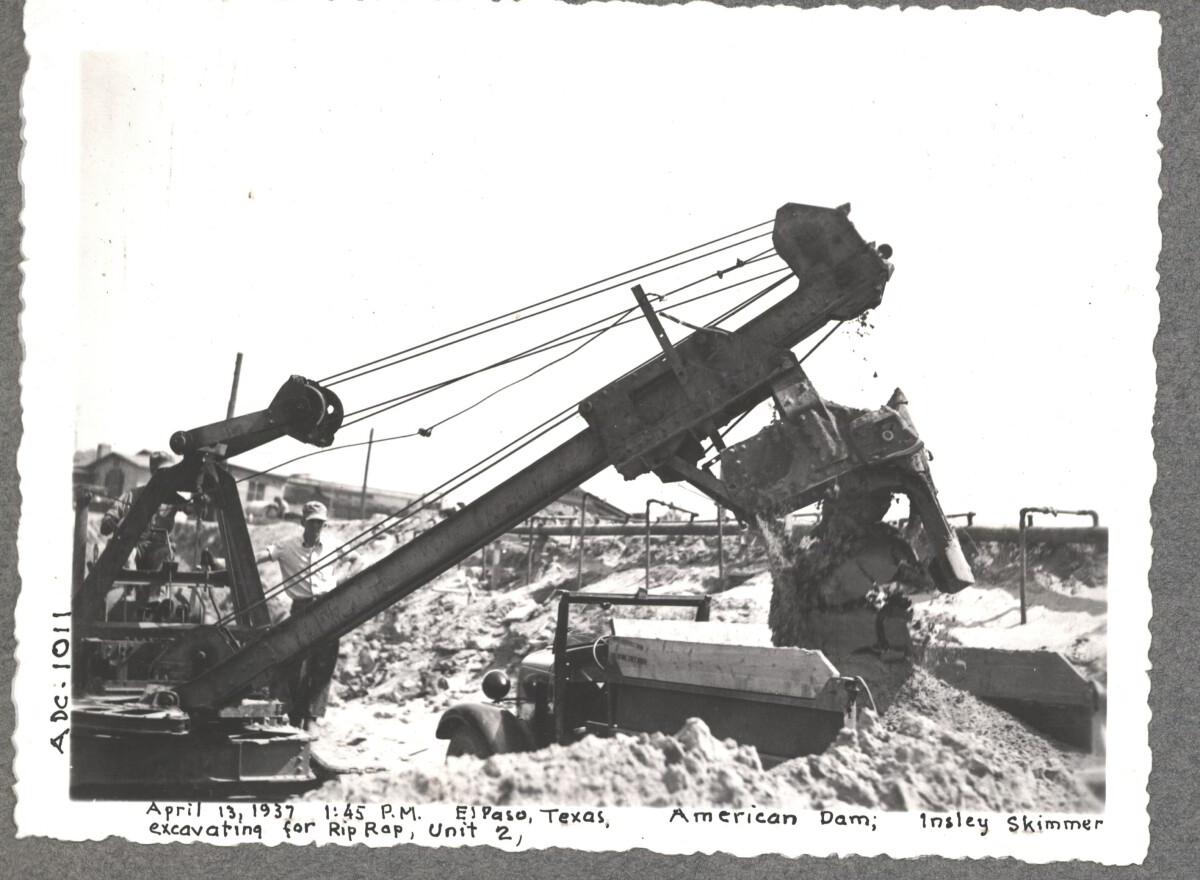
IBWC VI
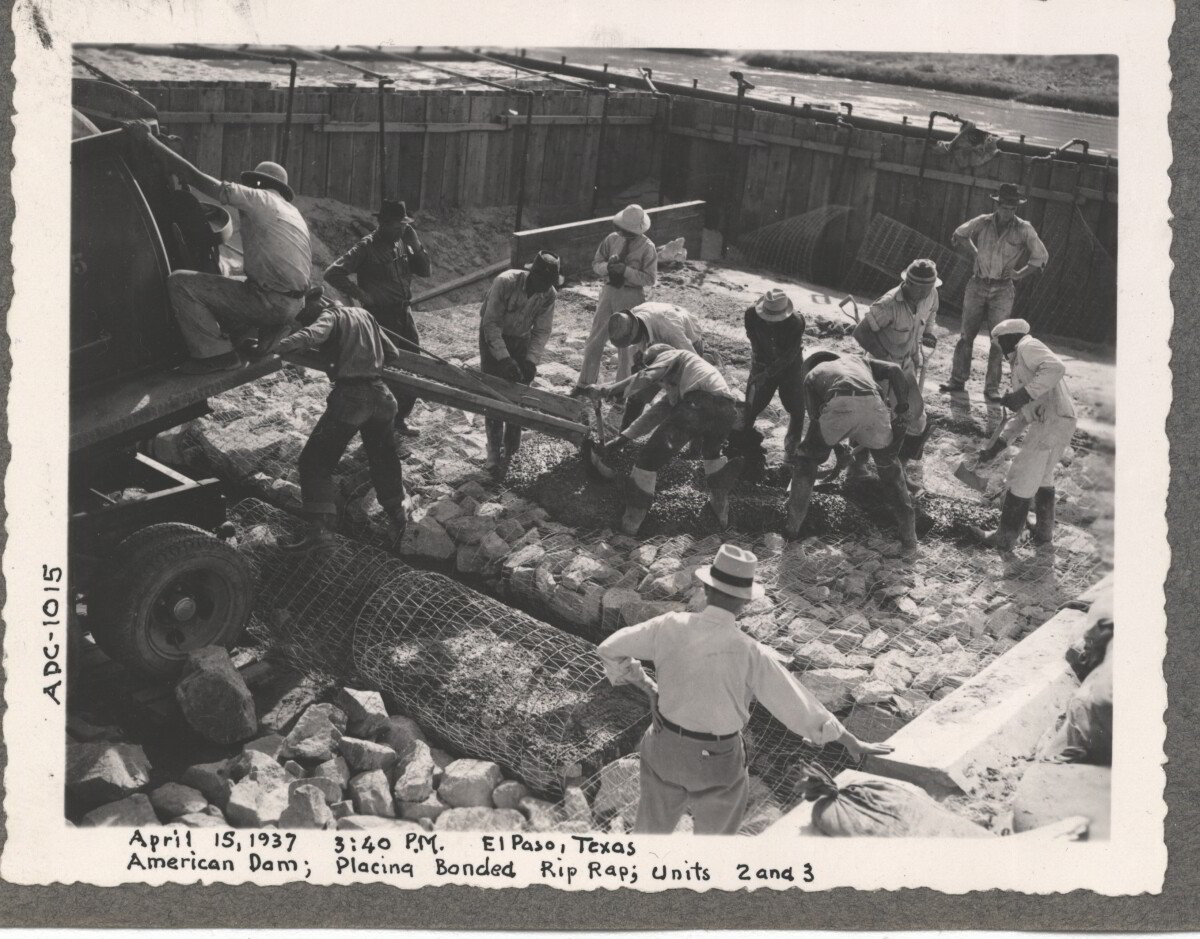
IBWC VI
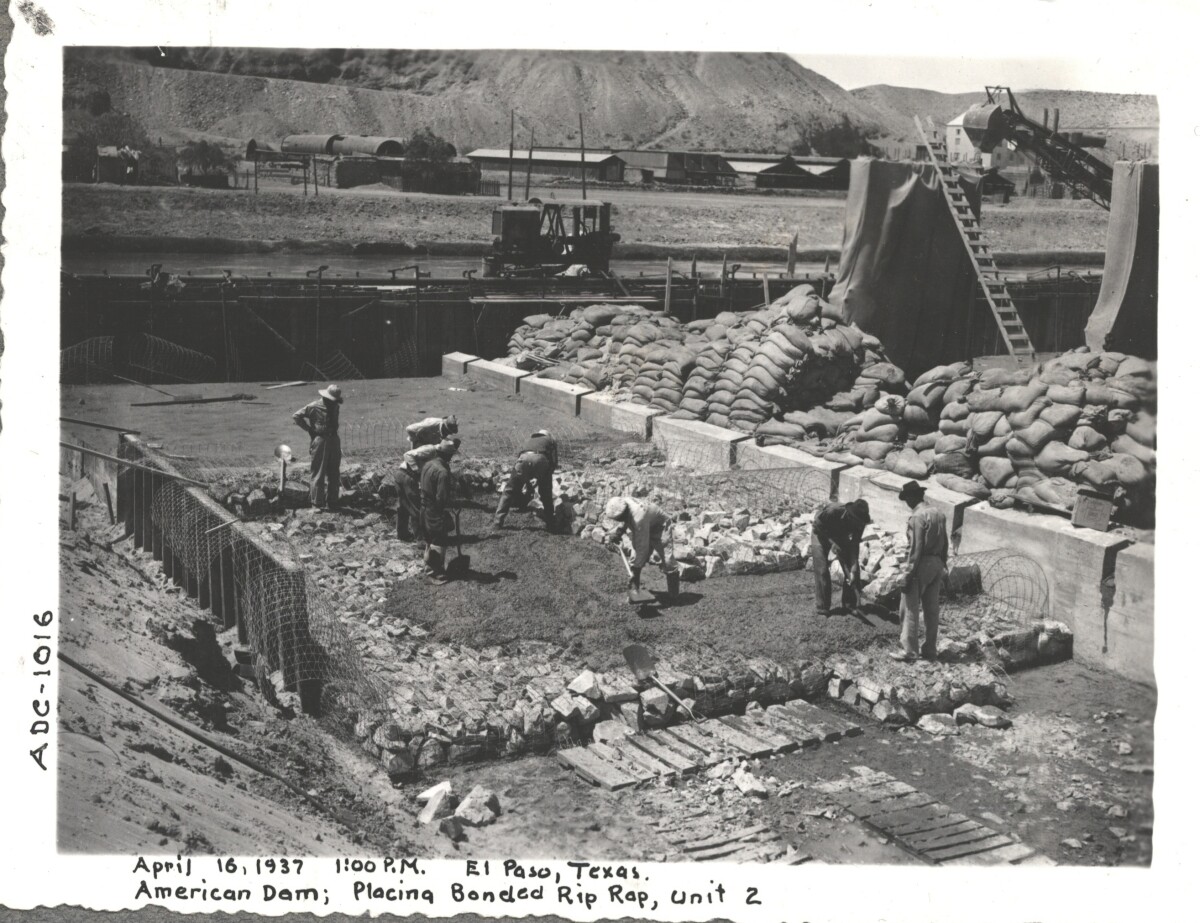
IBWC VI
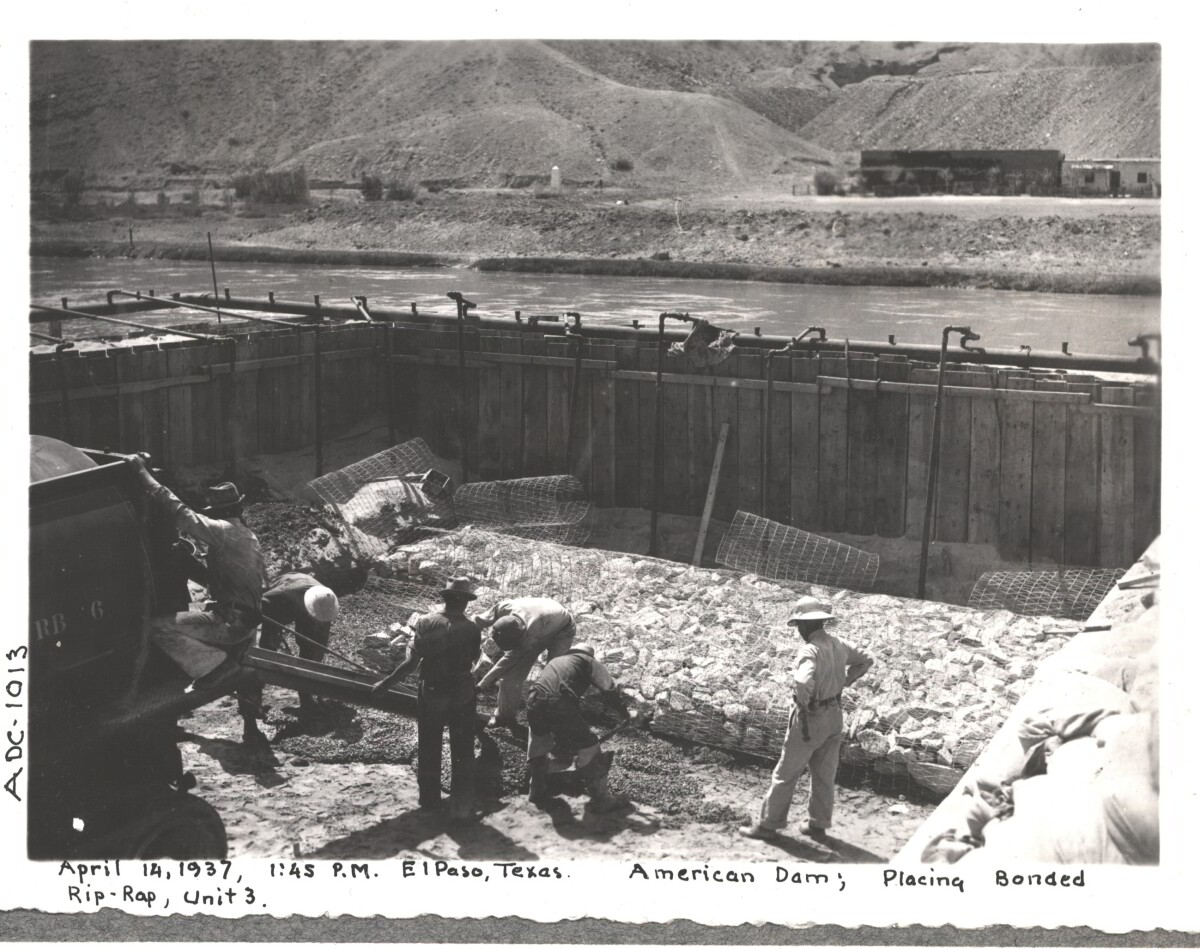
IBWC VI
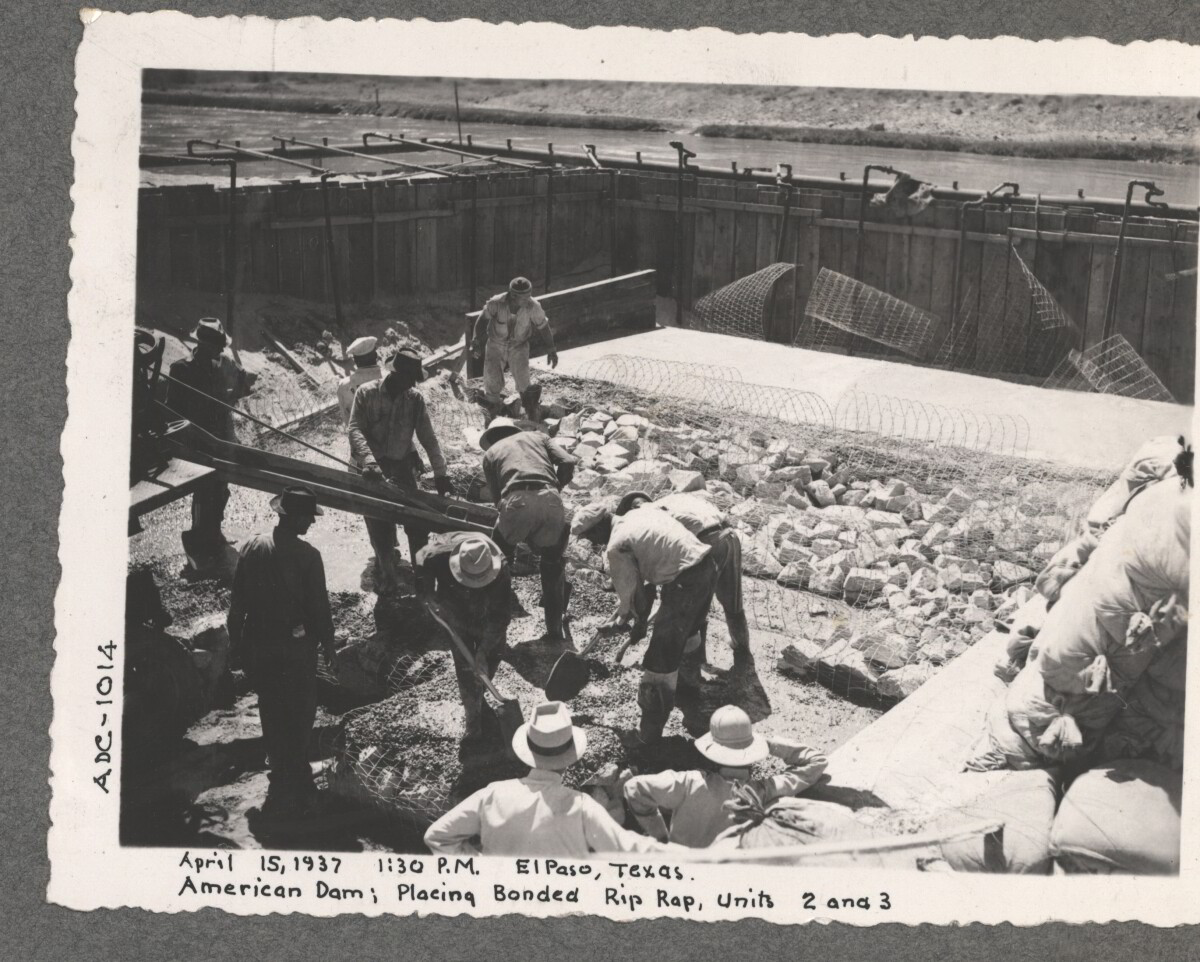
IBWC VI
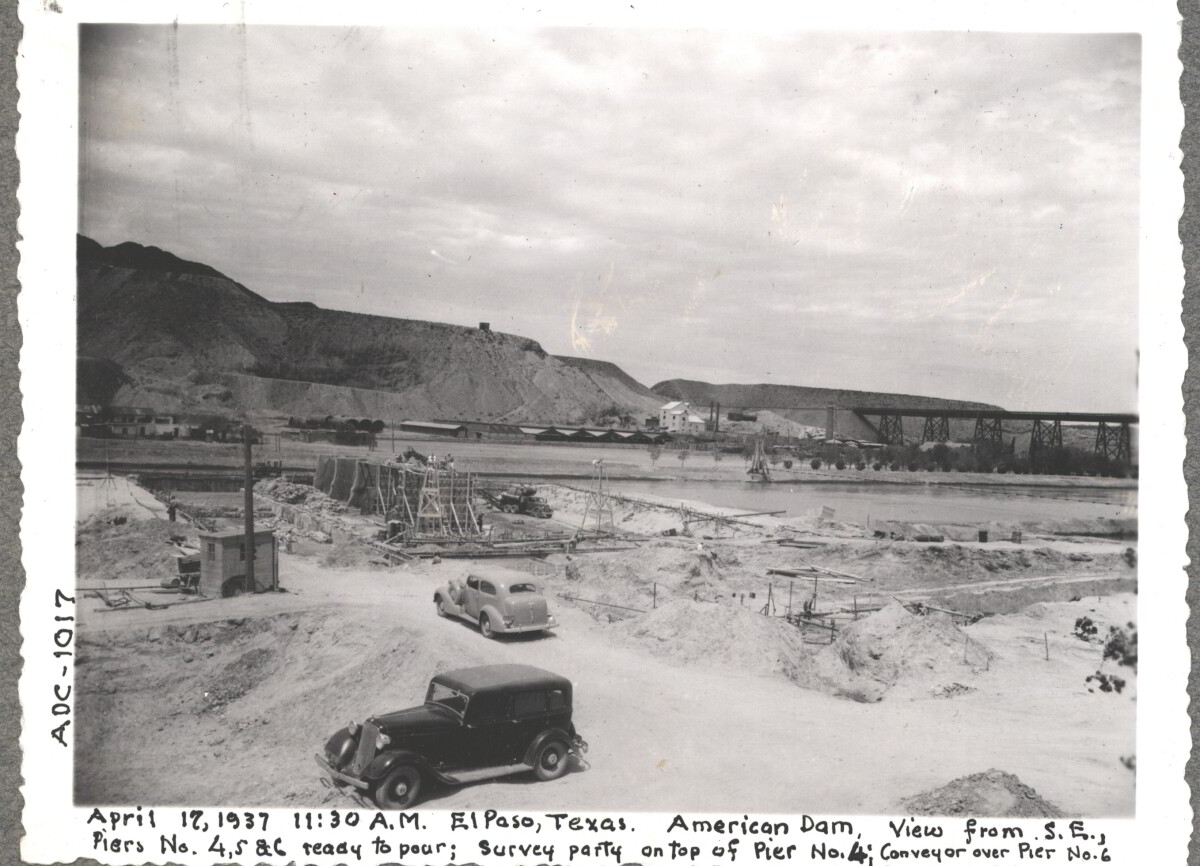
IBWC VI
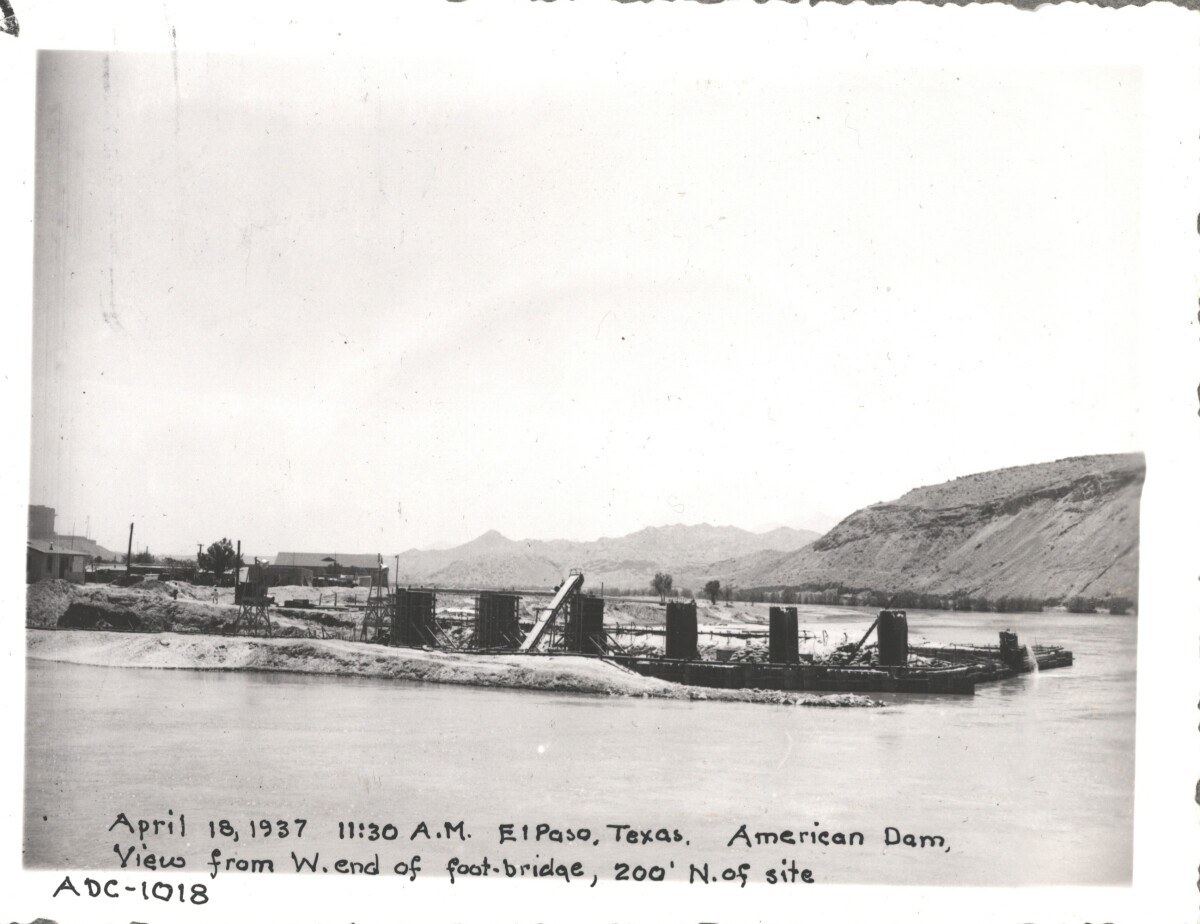
IBWC VI
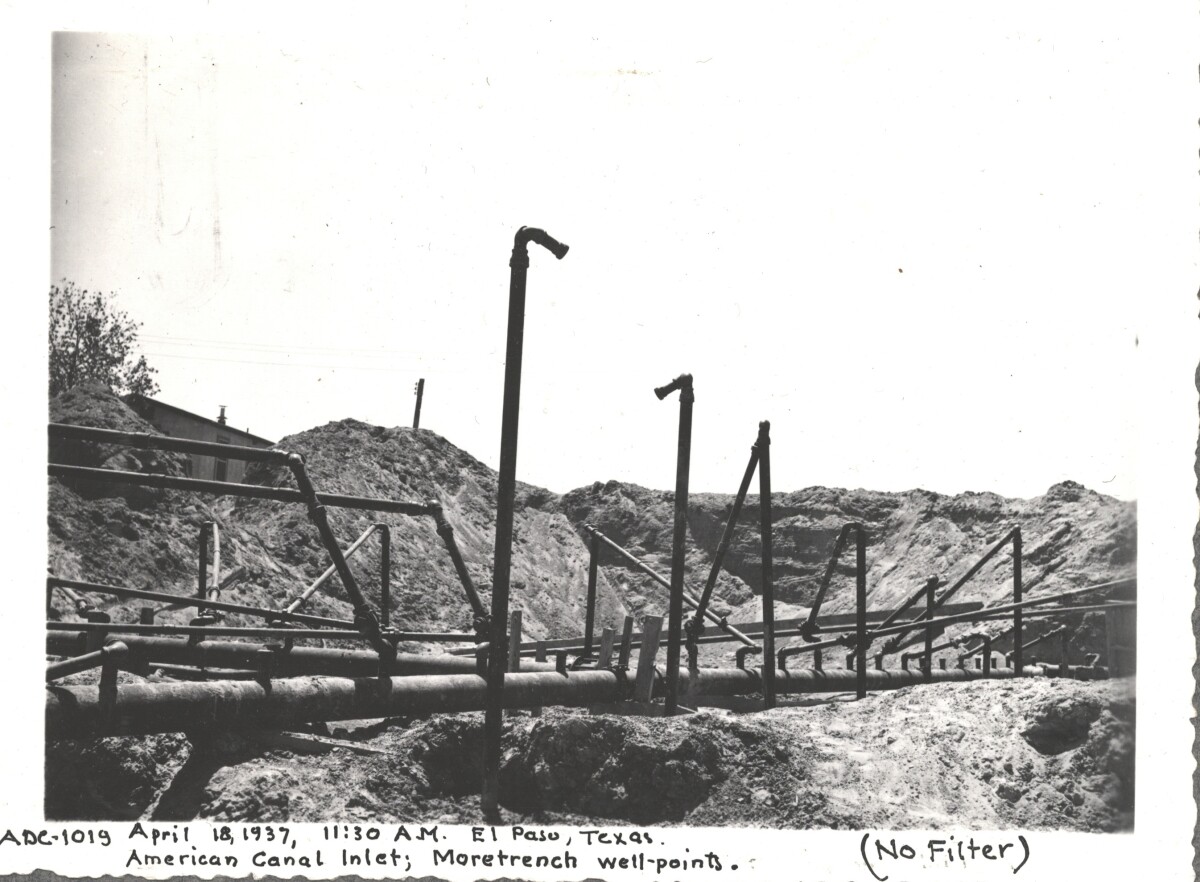
IBWC VI
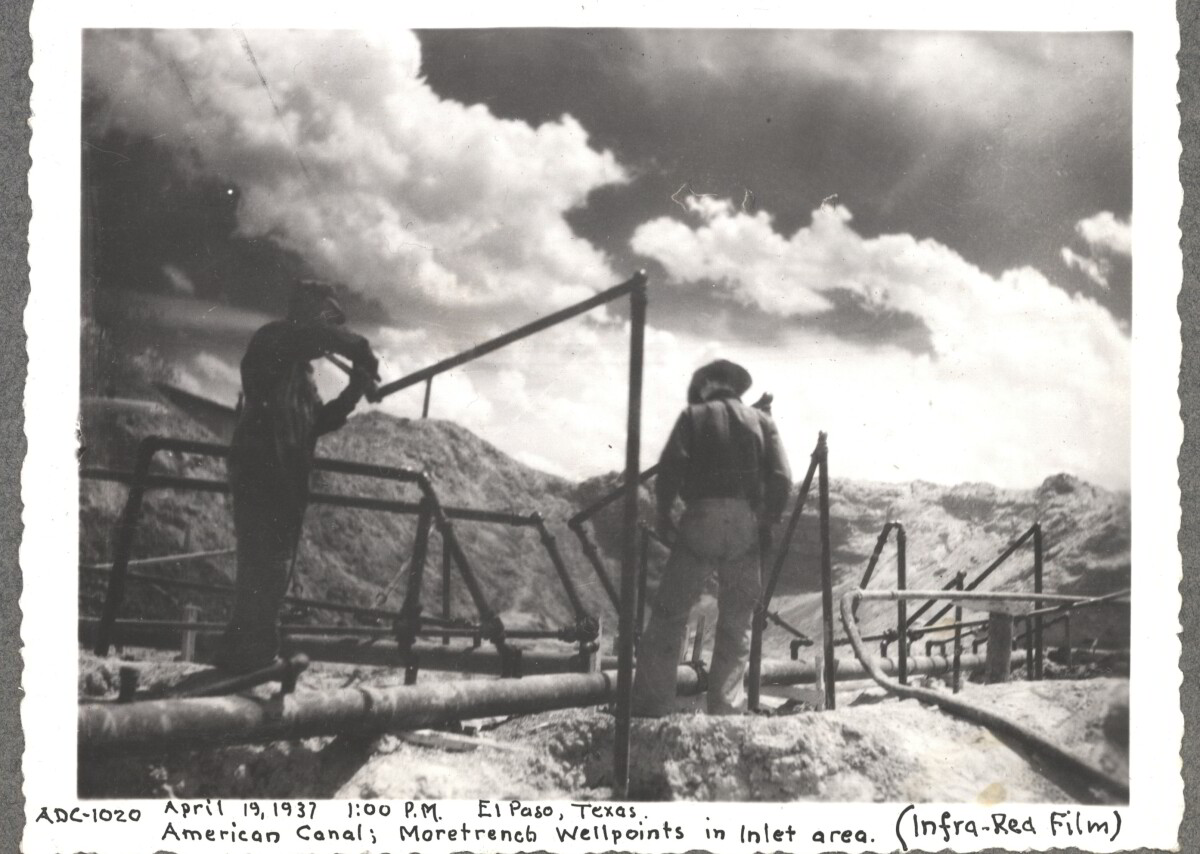
IBWC VI
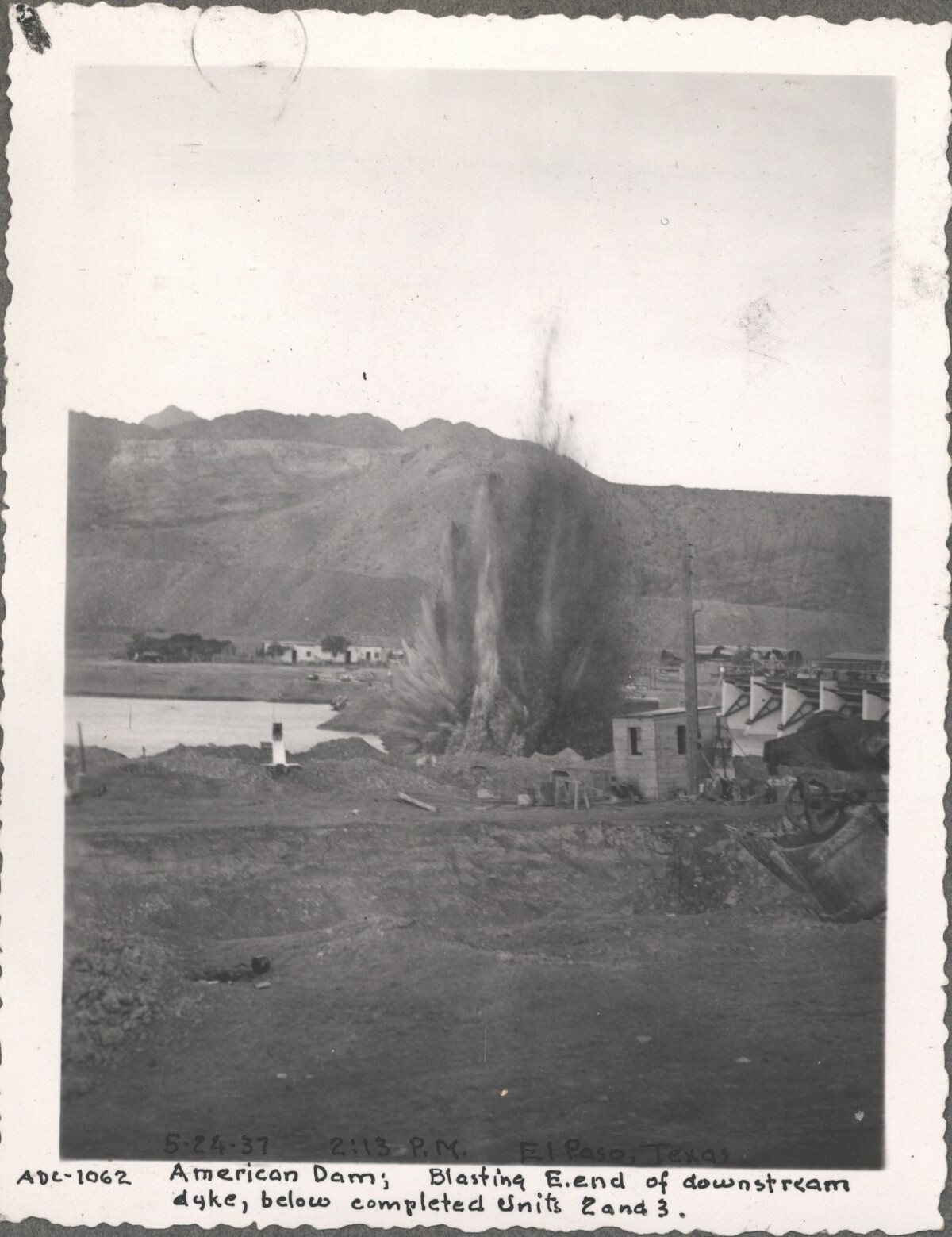
IBWC VI
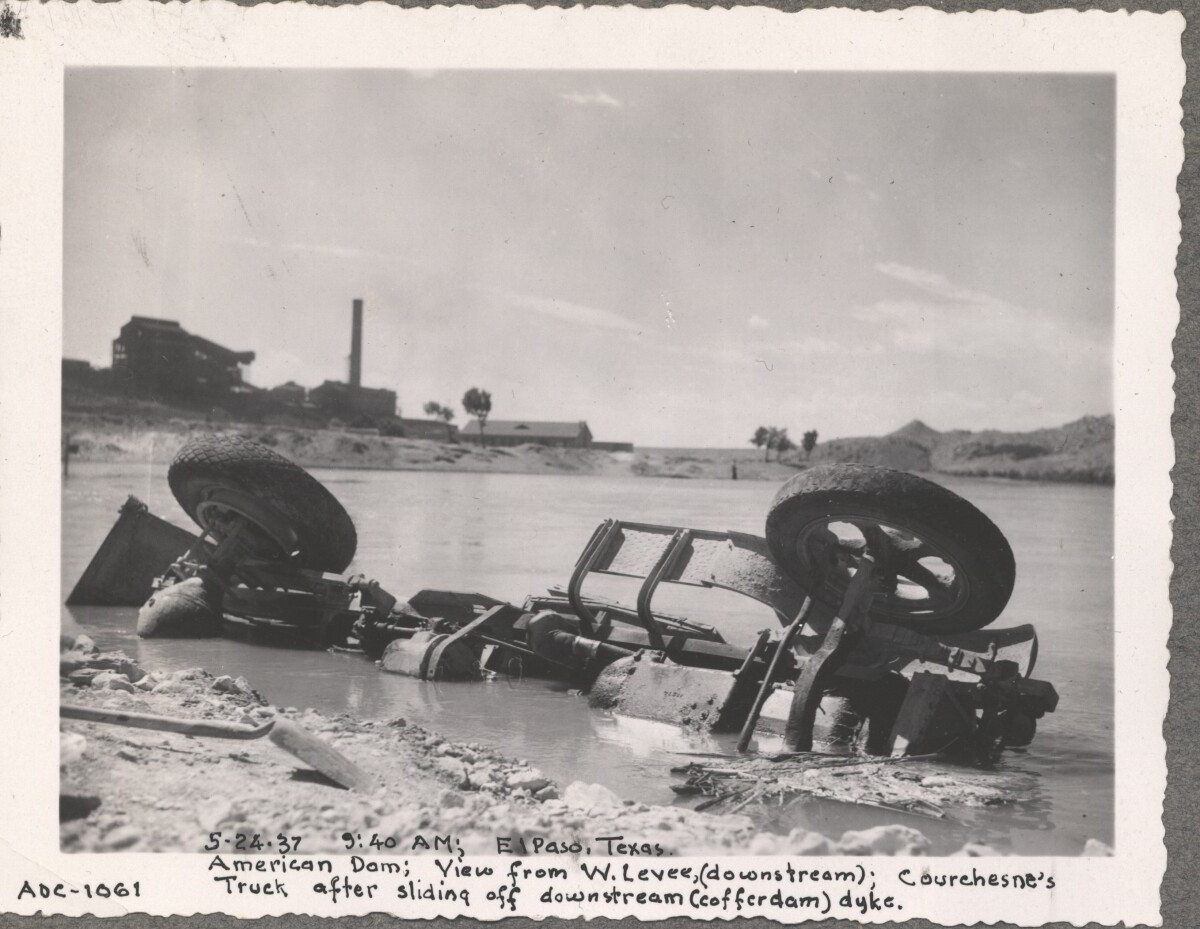
IBWC VI
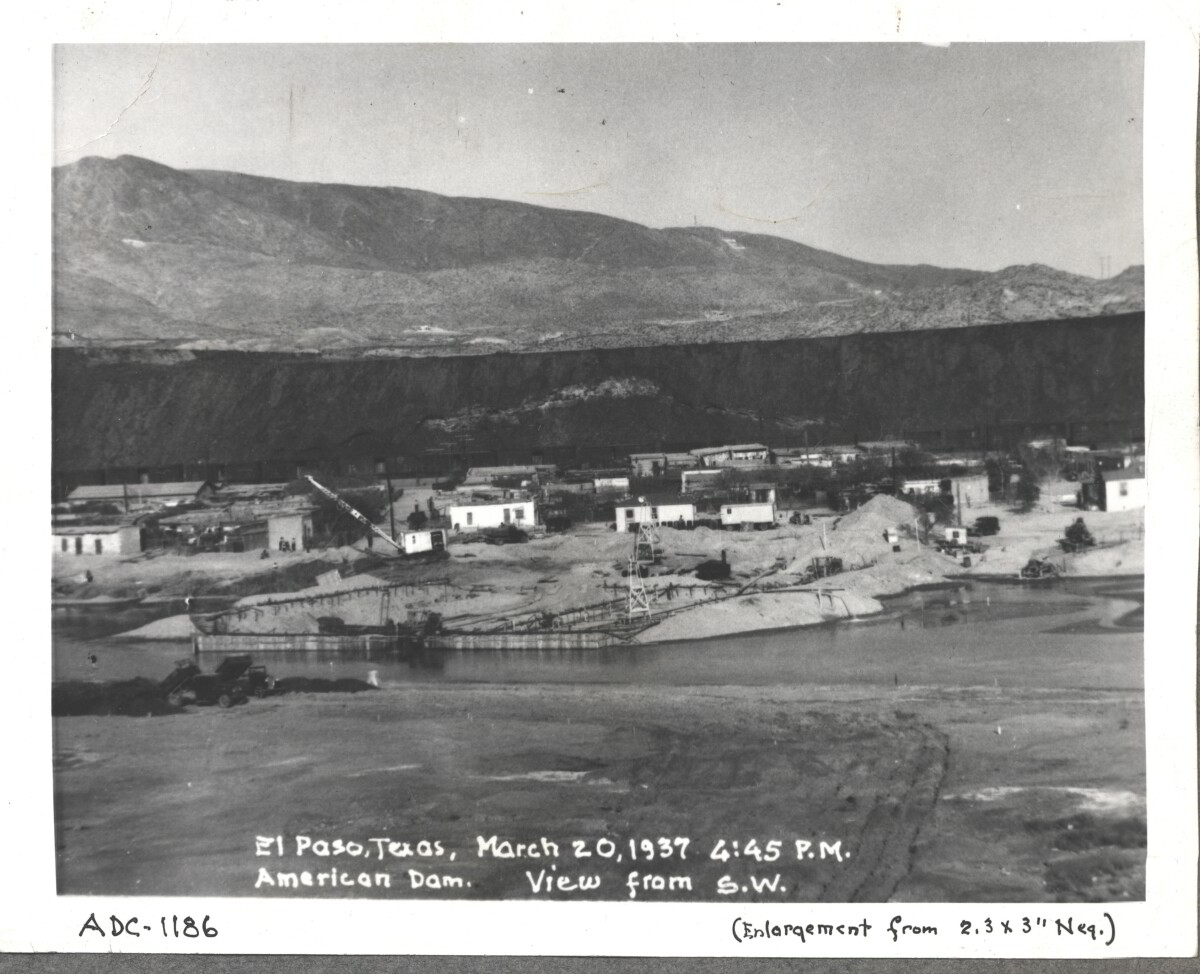
American Canal - Work in progress
American Canal - Work in progress; view south. Photo taken on April 30, 1937 at 4:25pm.
Area: Central / Smeltertown
Source: IBWC
Uploaded by: El Paso Museum of History
American Canal - Excavating inlet
American Canal - Excavating inlet. Photo taken on March 29, 1937 at 2:00pm.
Area: Central / Smeltertown
Source: IBWC
Uploaded by: El Paso Museum of History
American Dam
American Dam - View from southeast. Photo taken on March 20, 1937 at 1:30pm.
Area: Central / Smeltertown
Source: IBWC
Uploaded by: El Paso Museum of History
American Dam - Setting first forms
American Dam - Setting first forms, Pier No. 9. Photo taken on March 31, 1937 at 3:00pm.
Area: Central / Smeltertown
Source: IBWC
Uploaded by: El Paso Museum of History
American Dam - Pier placement
American Dam - Forms for piers #8 & 9 in place. Pouring floor in unit 2. View from southeast. Photo taken on April 3, 1937 at 1:00pm.
Area: Central / Smeltertown
Source: IBWC
Uploaded by: El Paso Museum of History
American Dam
American Dam - First pour into forms. Piers No. 7, 8, & 9. Mixer at No. 7; vibrator at No. 8. Photo taken on April 12, 1937 at 1:20pm.
Area: Central / Smeltertown
Source: IBWC
Uploaded by: El Paso Museum of History
American Dam - Insley Skimmer
American Dam - Insley Skimmer excavating for Rip Rap, Unit 2. Photo taken on April 13, 1937 at 1:45pm.
Area: Central / Smeltertown
Source: IBWC
Uploaded by: El Paso Museum of History
American Dam - Setting Well-points - El Paso, Texas
American Dam - Setting Well-points, south end of Unit 1. Photo taken on April 14, 1937 at 10:45am.
Area: Central / Smeltertown
Source: IBWC
Uploaded by: El Paso Museum of History
American Dam - Insley Skimmer
American Dam - Insley Skimmer excavating for Rip Rap, Unit 2. Photo taken on April 13, 1937 at 1:45pm.
Area: Central / Smeltertown
Source: IBWC
Uploaded by: El Paso Museum of History
American Dam - Placing Bonded Rip Rap
American Dam - Placing Bonded Rip Rap, Units 2 and 3. Photo taken on April 15, 1937 at 3:40pm.
Area: Central / Smeltertown
Source: IBWC
Uploaded by: El Paso Museum of History
American Dam - Placing Bonded Rip Rap
American Dam - Placing Bonded Rip Rap, Unit 2. Photo taken on April 16, 1937 at 1:00pm.
Area: Central / Smeltertown
Source: IBWC
Uploaded by: El Paso Museum of History
American Dam - Placing Bonded Rip Rap
American Dam - Placing Bonded Rip Rap, Unit 3. Photo taken on April 14, 1937 at 1:45pm.
Area: Central / Smeltertown
Source: IBWC
Uploaded by: El Paso Museum of History
American Dam - Placing Bonded Rip Rap
American Dam - Placing Bonded Rip Rap, Units 2 and 3. Photo taken on April 15, 1937 at 1:30pm.
Area: Central / Smeltertown
Source: IBWC
Uploaded by: El Paso Museum of History
American Dam - Pier Construction
American Dam - Piers No. 4, 5, and 6 ready to pour; survey party on top of Pier No. 4: Conveyor over Pier No. 6; view from southeast. Photo taken on April 17, 1937 at 11:30am.
Area: Central / Smeltertown
Source: IBWC
Uploaded by: El Paso Museum of History
American Dam
American Dam - View from west end of foot-bridge. Photo taken on April 18, 1937 at 11:30am.
Area: Central / Smeltertown
Source: IBWC
Uploaded by: El Paso Museum of History
American Canal Inlet
American Canal Inlet - Moretrench well-points. Photo taken on April 18, 1937 at 11:30pm.
Area: Central / Smeltertown
Source: IBWC
Uploaded by: El Paso Museum of History
American Canal Inlet
American Canal Inlet - Moretrench Wellpoints in inlet area. Photo taken on April 19, 1937 at 1:00pm.
Area: Central / Smeltertown
Source: IBWC
Uploaded by: El Paso Museum of History
Construction of American Dam 1937
Note: American Dam, Blasting E.end of downstream dyke, below completed units 2 and 3. For centuries the Rio Grande River has been used as a source of irrigation water for agriculture in the El Paso – Juarez area. In 1889 the governments of the United States and Mexico established the International Boundary Commission (IBC), in 1944 renamed the International Boundary and Water Commission (IBWC). One of its early actions was to discuss delivery of Rio Grande water to Mexico. In 1906, the two countries agreed to deliver 60,000 acre-feet of water annually to Mexico at the main irrigation Canal in Ciudad Juarez, known as Acequia Madre. The canal's mouth is two miles downstream from the international border. The remainder of the water would be used by American farmers in the ninety-mile-long El Paso valley. In times of drought both Mexican and American shares would be reduced on a percentage basis. The system did not provide a way for the United States to allot Mexico its rightful portion and keep the rest. As a result, Mexico took its share first and channeled the remainder into the Franklin Canal for the farms in the El Paso valley. According to some American estimates this permitted Mexico to siphon off up to three times its portion of irrigation water. Responding in 1935, Congress authorized two diversionary projects, the American Dam and the American Canal. The dam caught the water in New Mexico short of the international border, measured Mexico's share and allowed it to continue to the Acequia Madre, and diverted everything else into the American Canal, a two-mile feeder leading to the Franklin Canal. The American Canal parallels West Paisano Drive (US Highway 85) and the Burlington Northern Santa Fe Railroad track. The project has proved a successful solution to the problem of dividing the waters. Sources: http://www.tshaonline.org/handbook/online/articles/rua03 http://www.ibwc.gov/Files/EnvironmentalAssessment.pdf
Area: Central / Smeltertown
Source: IBWC
Uploaded by: El Paso Museum of History
Constuction of American Dam 1937
Note: 5-24-37, 9:40am, El Paso, Texas. American Dam; View from W. Levee (downstream); Courehesne's truck after sliding off downstream (cofferdam) dyke. For centuries the Rio Grande River has been used as a source of irrigation water for agriculture in the El Paso – Juarez area. In 1889 the governments of the United States and Mexico established the International Boundary Commission (IBC), in 1944 renamed the International Boundary and Water Commission (IBWC). One of its early actions was to discuss delivery of Rio Grande water to Mexico. In 1906, the two countries agreed to deliver 60,000 acre-feet of water annually to Mexico at the main irrigation Canal in Ciudad Juarez, known as Acequia Madre. The canal's mouth is two miles downstream from the international border. The remainder of the water would be used by American farmers in the ninety-mile-long El Paso valley. In times of drought both Mexican and American shares would be reduced on a percentage basis. The system did not provide a way for the United States to allot Mexico its rightful portion and keep the rest. As a result, Mexico took its share first and channeled the remainder into the Franklin Canal for the farms in the El Paso valley. According to some American estimates this permitted Mexico to siphon off up to three times its portion of irrigation water. Responding in 1935, Congress authorized two diversionary projects, the American Dam and the American Canal. The dam caught the water in New Mexico short of the international border, measured Mexico's share and allowed it to continue to the Acequia Madre, and diverted everything else into the American Canal, a two-mile feeder leading to the Franklin Canal. The American Canal parallels West Paisano Drive (US Highway 85) and the Burlington Northern Santa Fe Railroad track. The project has proved a successful solution to the problem of dividing the waters. Sources: http://www.tshaonline.org/handbook/online/articles/rua03 http://www.ibwc.gov/Files/EnvironmentalAssessment.pdf
Area: Central / Smeltertown
Source: IBWC
Uploaded by: El Paso Museum of History
American Dam
March 20, 1937 4:45 PM El Paso TX American Dam, view from southwest.
Area: Central / Smeltertown
Source: IBWC
Uploaded by: El Paso Museum of History
Report this entry
More from the same community-collection
Marriage License Luis Flores and Maria de la Luz Marquez
Marriage license from my grandparents wedding on March 31, 1940.
Asarco - El Paso, Texas - 1960's
This is a picture of ASARCO men that worked there and some lived ...
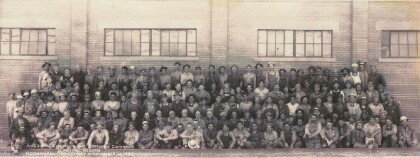
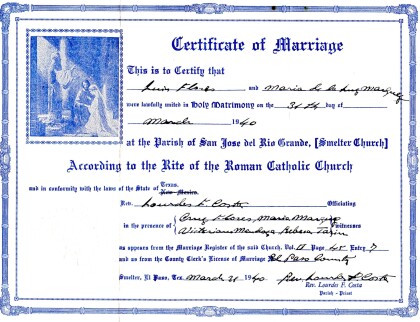
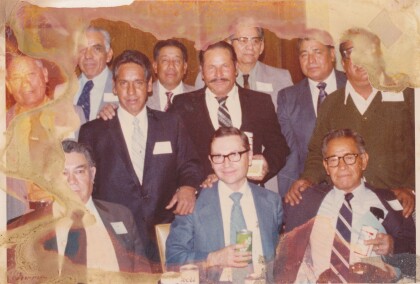
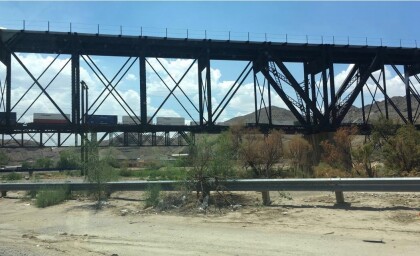
Comments
Add a comment